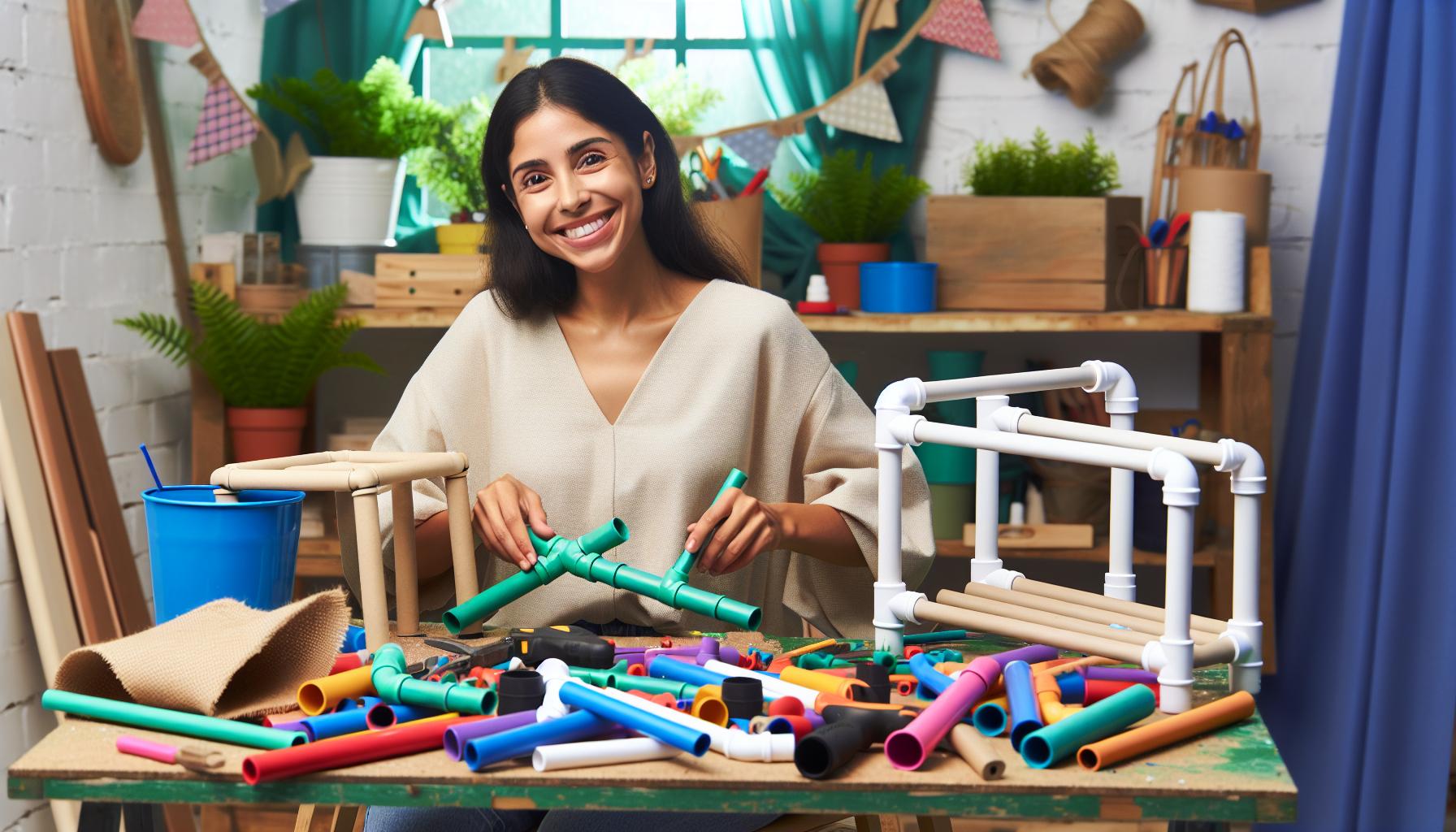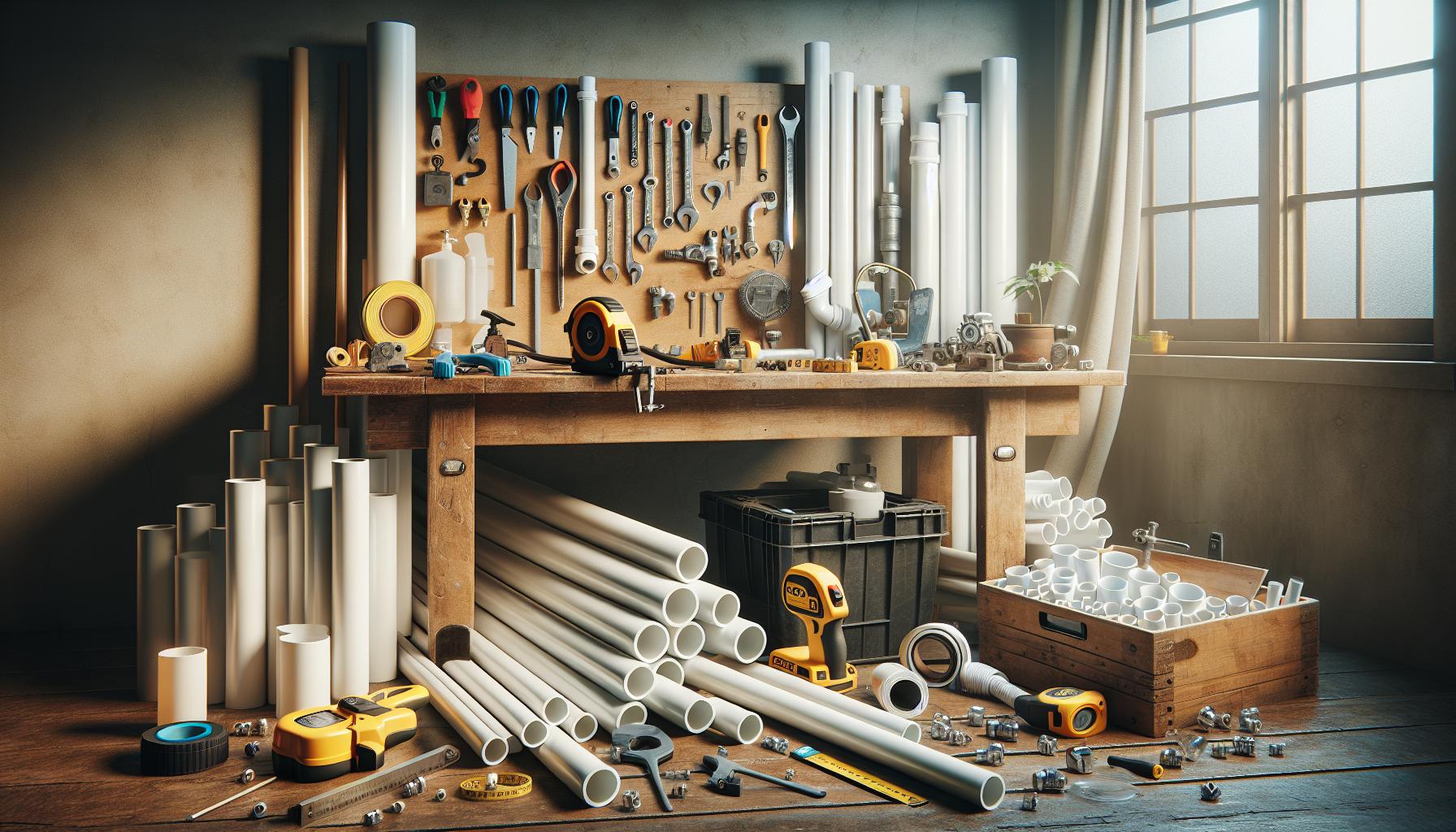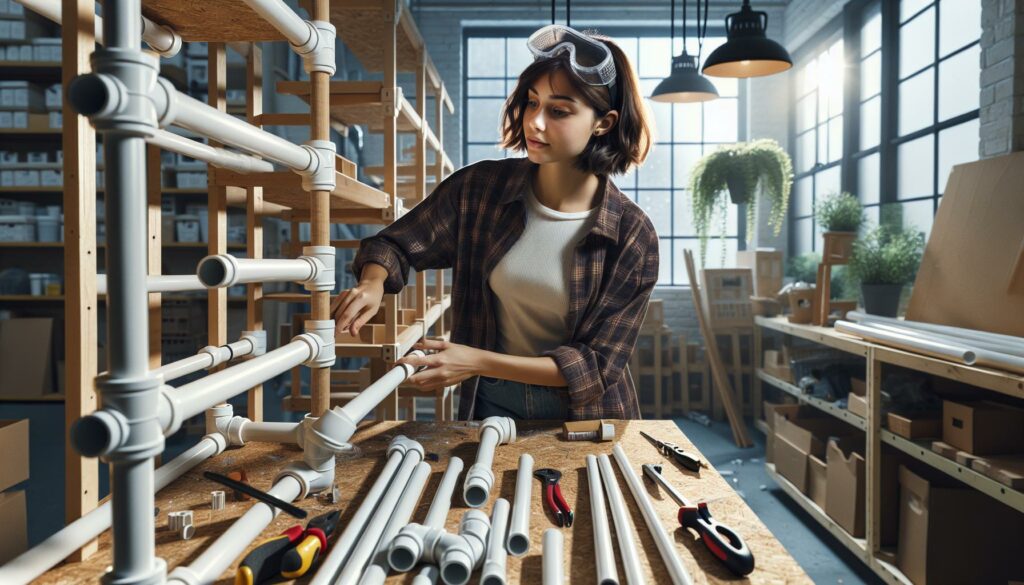If you’re looking to unleash your creativity without breaking the bank, PVC DIY projects might just be your new best friend. This versatile material is not only affordable but also incredibly easy to work with, making it perfect for both beginners and seasoned crafters. From home decor to practical storage solutions, the possibilities are endless.
Key Takeaways
- Versatile Material: PVC’s lightweight and durable properties make it ideal for various DIY projects, from furniture to storage solutions.
- Cost-Effective: PVC is an affordable alternative to wood and metal, providing budget-friendly options without compromising quality.
- Wide Range of Projects: Popular PVC projects include furniture designs (chairs, benches, tables) and organizational items (bins, cubbies, wall mounts).
- Essential Tools: Key tools for successful PVC crafting include measuring tape, PVC cutters, miter saws, drills, and safety gear for a safe working environment.
- Techniques for Success: Proper measuring, cutting, and assembly techniques, such as measuring twice and using appropriate fittings, ensure high-quality results in PVC projects.
PVC DIY Projects
PVC (Polyvinyl Chloride) provides an extensive range of applications for DIY projects. Its lightweight nature and durability make it ideal for various crafting solutions. DIY enthusiasts like me appreciate PVC for its versatility, allowing for both creative home decor and functional items.
I can use PVC pipes to build innovative furniture pieces, such as chairs and shelving units. These projects often require minimal tools and basic assembly skills. Successful attempts can enhance indoor spaces while providing custom solutions tailored to individual needs.
Storage solutions using PVC also prove popular. One can create bins, organizers, and even vertical gardens with ease. These projects often incorporate simple designs that maximize space while minimizing clutter.
Additionally, PVC lends itself well to outdoor applications. I can construct outdoor furniture or fencing that withstands the elements. With UV resistance, painted or textured finishes can improve aesthetics and durability.
When starting with PVC, I find it helpful to utilize online resources for plans and tutorials. Community forums provide valuable tips and inspiration. Each project can act as a stepping stone towards more complex endeavors, enriching my crafting experience while maximizing the advantages of PVC materials.
Benefits Of Using PVC For DIY Projects

Using PVC for DIY projects offers numerous benefits. Its versatility and functional characteristics enhance the crafting experience, making it a preferred choice among DIY enthusiasts.
Lightweight and Durable
Lightweight characteristics facilitate easy handling and transportation of PVC materials. Durability ensures that projects resist wear and tear, making PVC ideal for both indoor and outdoor applications. I often find PVC pipes suitable for innovative furniture designs, such as benches and tables, which maintain their integrity over time. This combination of being lightweight and durable allows for projects that are not only easy to construct but also long-lasting.
Cost-Effective Solutions
Cost-effectiveness plays a significant role in choosing PVC for DIY projects. PVC materials generally cost less than wood and metal options, providing budget-friendly solutions without sacrificing quality. I frequently choose PVC for crafting storage solutions, like custom bins and organizers, that provide comparable functionality at a fraction of the price. Additionally, the accessibility of PVC materials in local hardware stores furthers their appeal, allowing for quick and affordable acquisitions to fuel creativity.
Popular PVC DIY Project Ideas

PVC offers countless creative opportunities for DIY projects. Here are some popular ideas that utilize PVC’s versatility and affordability.
PVC Furniture Designs
- PVC Chairs: I can craft lightweight and sturdy chairs using PVC pipes. They’re perfect for both indoor and outdoor settings.
- PVC Benches: Building a bench from PVC not only provides seating but also adds a decorative touch to any space. It requires minimal materials and can be customized easily.
- PVC Shelving Units: Constructing shelving units with PVC offers ample storage while remaining visually appealing. I can design shelves to fit any wall size, making them versatile for various rooms.
- PVC Tables: DIY tables made from PVC are both functional and stylish. I can create coffee tables, dining tables, or side tables, adjusting dimensions to fit specific needs.
- PVC Bins: I can create storage bins from PVC to organize various items around the house. These bins are lightweight and easily movable.
- PVC Organizers: Designing organizers with PVC can optimize my workspace, keeping tools, art supplies, or office materials tidy and readily accessible.
- PVC Cubbies: I can build cubby systems from PVC for children’s toys, providing a colorful and engaging way to store and display their belongings.
- PVC Wall Mounts: Creating wall-mounted storage solutions from PVC frees up floor space while offering a way to showcase decor or store frequently used items.
These project ideas highlight how PVC serves as a strong, cost-effective material suitable for both functional and decorative uses in various DIY applications.
Tools and Materials Needed

For successful PVC DIY projects, having the right tools and materials is crucial. Below are the essential items I recommend to ensure smooth crafting experiences.
Essential Tools for PVC Projects
- Measuring Tape: Precision in measuring lengths and angles ensures accurate cuts.
- PVC Cutter: This tool provides clean cuts on various sizes of PVC pipes, making the task easier and quicker.
- Miter Saw: Useful for angled cuts, a miter saw grants enhanced flexibility in design.
- Drill: A power drill aids in making holes for screws and fittings, ensuring strong connections.
- Sandpaper: To smooth rough edges after cutting, sandpaper enhances safety and aesthetics.
- Clamps: Keeping materials in place during assembly helps achieve precise alignments.
- Safety Gear: Goggles and gloves protect against debris and sharp edges, ensuring a safe working environment.
- Schedule 40 PVC Pipe: Standard for most DIY projects, this pipe offers a balance of strength and weight, suitable for furniture and shelving.
- Schedule 80 PVC Pipe: Thicker walls provide increased durability and are ideal for heavy-duty applications.
- PVC Elbows: These fittings allow for changes in direction, essential for crafting complex structures.
- PVC Tees: Useful for branching, tees help create multi-directional designs in storage solutions.
- PVC Caps: These fittings close the ends of pipes, perfect for finishing project edges neatly.
- PVC Couplings: Couplings connect two pipes, enabling longer lengths or complex shapes in projects.
- PVC Flanges: These fittings allow for secure attachment to walls or bases, ensuring stability in larger structures.
Having these tools and materials on hand paves the way for a successful PVC DIY project, driving creativity in crafting innovative solutions.
Tips For Successful PVC DIY Projects
I want to share essential tips that enhance the success of PVC DIY projects, focusing on key techniques for measuring, cutting, and assembling. These strategies ensure that each project runs smoothly and achieves desired outcomes.
Measuring and Cutting Techniques
- Measure Twice: Measure the length of each PVC piece before cutting. Accurate measurements prevent mistakes and waste.
- Use a Straight Edge: Align a straight edge with the marking before cutting. This alignment promotes precision and straight cuts.
- Employ a Good Cutter: Utilize quality PVC cutters for clean cuts. A miter saw can also provide accurate angles for joints.
- Mark Clearly: Use a permanent marker for clear markings. Visible lines make it easier to see where to cut.
- Sand Edges: Sand the cut edges lightly to remove burrs. Smooth edges help create a better fit while joining pieces.
- Use Appropriate Fittings: Select the right fittings for your project. Elbows, tees, and couplings ensure secure connections.
- Apply PVC Cement: Apply PVC cement to both the fitting and the pipe. This ensures a strong bond that’s also permanent.
- Twist as You Insert: Twist the pipe slightly as it enters the fitting. This action helps distribute the cement evenly.
- Hold in Place: Hold the connections for a few seconds to ensure they stay together while the cement sets.
- Allow for Drying Time: Follow manufacturer guidelines for drying time. Ensuring proper curing results in stronger joints.
These techniques enhance the quality and durability of PVC projects, making crafting straightforward and enjoyable.
Embracing PVC for my DIY projects has opened up a world of creativity and practicality. Its affordability and versatility make it an ideal choice for anyone looking to enhance their home with unique and functional designs.
Whether I’m crafting furniture or organizing my space, PVC consistently proves to be a reliable material. With just a few basic tools and some inspiration, I can transform simple pipes into stunning creations.
I encourage you to explore the endless possibilities that PVC offers. Dive into your next project with confidence and let your imagination guide you. You’ll be amazed at what you can create.

